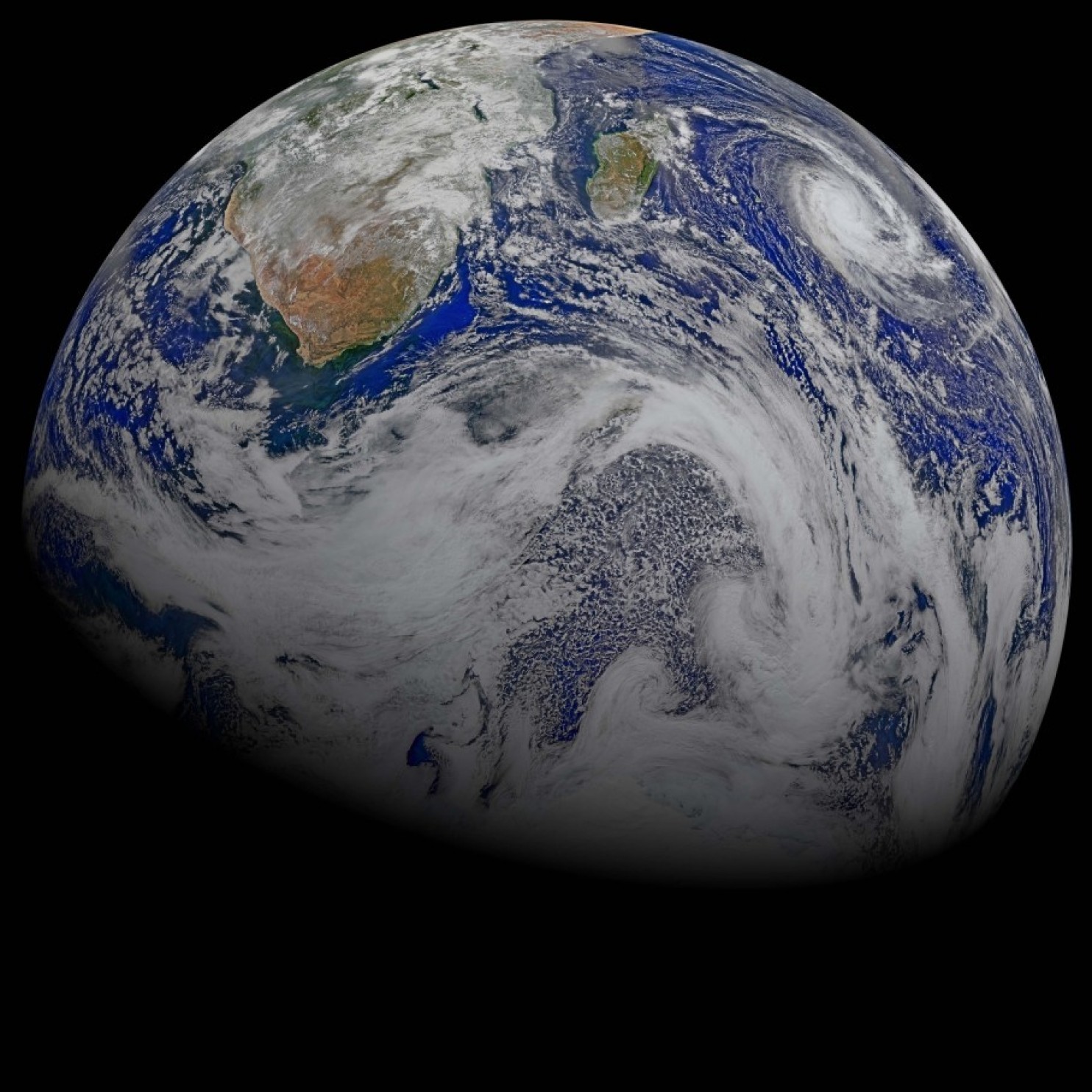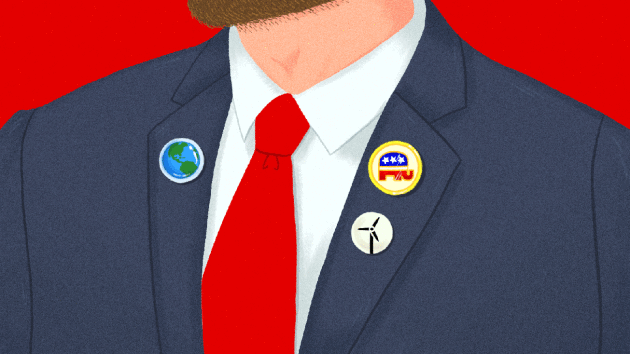The coldest Super Bowl game? Super Bowl VI in 1972, when Dallas trounced Miami, 24 to 3. The gametime temperature at Tulane Stadium in New Orleans was a “brisk” 39F. Child’s play.
Single-Day Snowfall Amounts. 12.4″ fell at MSP International Monday, the most snow falling on a single calendar-day since December 11, 2010.
Fresh Snow From Space. You can see how sharp that northwest snowfall gradient was; very little snow north and west of the line from Tracy to Monticello. Tuesday visible image: WeatherTap.
February 4 Projected Weather Map. Here is GFS guidance, hinting at a clipper capable of a couple inches of powdery snow on Super Bowl Sunday, maybe more over southern Minnesota. Again, it’s much too early to get specific. Just follow the trends in the coming days. Map: WSI.
After Hurricane, Islanders Fear Their Cherished Lifestyle May Be Lost Forever. Here’s a clip from a story at The Washington Post: “…Months after Hurricane Irma blazed its destructive path through the Caribbean, the once vibrant community on the tiny island of Barbuda is still struggling to rebuild paradise lost. Before the September storm, Barbuda was a nearly forgotten Eden about the physical size of the District of Columbia. Its 1,700 inhabitants were family, literally. The descendants of African slaves brought centuries ago by the British, many islanders were related. The workdays were short, and the lobster was sweet. There were no street addresses. Everyone went by their first names. Irma’s Category 5 winds damaged virtually 100 percent of the island. In its aftermath, and as Hurricane Jose threatened to hit, the island was evacuated. A few hundred Barbudans have since returned, seeking to rebuild...”
File image of Hurricane Irma on September 5, 2017: AerisWeather.

Data Shows Solar Energy Really Is a Leading American Job Creator. Here’s an excerpt of an Op-Ed from The Solar Foundation at TheHill: “The rapid expansion of solar energy over the past few years has created hundreds of thousands of well-paying American jobs. The most recent National Solar Jobs Census published by The Solar Foundation, a nonprofit organization I lead, found there were 260,077 solar workers in the United States as of 2016. That year, one in 50 new U.S. jobs were in solar, and the industry added jobs 17 times faster than the overall economy. As the industry wait for a decision on solar panel tariffs, some critics questioned the accuracy of this jobs data…”
Trump Slaps Tariffs on Solar Panels: From Climate Nexus: “President Trump imposed a 30 percent tariff on imported solar cells and panels Monday, sending one of the most aggressive protectionist signals of his administration to date and garnering criticism from US businesses and key international trading partners. The tariff, which Trump paired with a similar duty on imported washing machines, followed a September ruling from the International Trade Commission that low-cost solar imports, particularly from China, are hurting US solar manufacturers. While the final tariff, which will fall by half after its first year, is less than the 50 percent requested by ITC petitioners Suniva and SolarWorld, the decision still holds several worrisome implications for the booming American solar industry, including a potential to greatly curb US jobs and reduce competitiveness. Bipartisan lawmakers, various industries, and international leaders blasted the decision, with key US trading partner South Korea suggesting that it plans to complain to the World Trade Organization.” (Decision: New York Times $, Washington Post $, AP, WSJ $, Politico, Reuters, Axios, Bloomberg, The Guardian, The Hill, Fortune, The Verge, Greentech Media, Vox, Mother Jones. SK response: Reuters. China response: Reuters. Mexico response: Reuters. India response: Bloomberg. Business response: WSJ $, Bloomberg. Commentary: LA Times, Jon Healey column $, Reuters, Christopher Beddor analysis, Bloomberg, Liam Denning
Photo credit: Xcel Energy.
The Potential Pitfalls of Electric Cars – in 5 Charts. Yes, I drive an electric car, but I’m trying to keep my eyes wide open to the upsides and downsides. Here’s an excerpt from WIRED.com: “…Even if we switch the entire global energy supply to renewables, we’re going to have to mine a lot more cobalt, lithium, and other raw ingredients to create all those batteries—and do so sustainably and responsibly. For example, more than 60 percent of the world’s cobalt—a key ingredient for lithium-ion battery electrodes—comes from the Democratic Republic of Congo, where human rights abuses are rampant. Researchers are working on new batteries that require fewer problematic ingredients, and the countries proposing the bans will ideally follow through with commitments to renewable energy...”
Forget the Midwest. Minnesota Casts Itself as the North. In case you missed the article at The Wall Street Journal: “A growing movement in Minnesota aims to break free of its Midwest roots and embrace its bone-chilling winters with a new identity: the North. Seeking to conjure up images of competitive winter sports, icy lakes and snuggling in front of a toasty fire, these northern evangelists are ready for their moment in the sun when Super Bowl LII comes to Minneapolis on Feb. 4. Minnesotans are “sick of being this afterthought in this afterthought called the Midwest. We’re the star of the North and no one else can offer that,” said R.T. Rybak, who served as mayor of Minneapolis from 2002 until 2014. The state is using the North to tackle an economic challenge: historically low unemployment and sluggish population growth. Employers complain that they can’t find the workers they need to fill jobs…”
Photo credit: “A mural in St. Paul, Minn., is part of a planned rejuvenation of the city’s downtown.” Photo: David Joles/Minneapolis Star Tribune/ZUMA PRESS.
Botoxed camels aren’t welcome in Saudi Arabia. Reuters explains: “…A dozen beasts have been disqualified from this year’s Saudi “camel beauty contest” because their handlers used Botox to make them more handsome. “The camel,” explained the chief judge of the show, Fawzan al-Madi, “is a symbol of Saudi Arabia. We used to preserve it out of necessity, now we preserve it as a pastime.” Much is changing in Saudi Arabia: the country is getting its first movie theaters. Soon women will be permitted to drive. The authorities eventually hope to diversify the economy away from the oil that has been its lifeblood for decades…”
Photo credit: “Saudi men stand next to camels as they participate in King Abdulaziz Camel Festival in Rimah Governorate, north-east of Riyadh, Saudi Arabia January 19, 2018. Picture taken January 19, 2018.” REUTERS/Faisal Al Nasser.

Team USA Will Wear Self-Heating Ralph Lauren Parkas for the Olympic Opening Ceremony. Quartzy has details: “…. Inside their red, white, and blue parkas will be an electronic heating system, made of flexible carbon and silver ink printed directly onto the fabric—in the shape of an American flag, of course. The ink, according to Ralph Lauren, is conductive, and connects to a battery pack that can be set to high, low, or off. At a full charge, it provides five hours of heat on the high setting, and 11 hours on the low. “The heat is immediate—it can be felt as soon as the button is pressed,” the company says. David Lauren, its chief innovation officer, led the project to develop the technology…”
11″ snow on the ground Tuesday morning in the Twin Cities.
28 F. high yesterday at KMSP.
24 F. average high on January 23.
35 F. high on January 23, 2017.
January 24, 1968: A rare severe thunderstorm hits the Twin Cities and leaves a coating of ice an inch thick. 10 thousand homes were without power.
January 24, 1950: An ice storm develops over southwest Minnesota. Ice on telephone wires from 1/3 to 1.5 inches. Bismarck, North Dakota had 17 inches of snow. A Northern Pacific passenger train derailed at Detroit Lakes with no injuries.
January 24, 1925: A solar eclipse is seen across northern Minnesota during the morning. The Duluth Herald reported that chickens were ‘puzzled by the dark morning’ and didn’t leave their roosts.
WEDNESDAY: Partly sunny, milder. Winds: SW 5-10. High: near 30
WEDNESDAY NIGHT: Partly cloudy. Low: 18
THURSDAY: Glimmers of sun, thawing out. Winds: SE 7-12. High: 35
FRIDAY: Windy and mild. Feels like February. Winds: SW 8-15. Wake-up: 30. High: 43
SATURDAY: Cooler breeze, few flurries around. Winds: W 8-13. Wake-up: 22. High: 34
SUNDAY: Chilly, more clouds than sun. Winds: NW 8-13. Wake-up: 12. High: 19
MONDAY: Blue sky, light winds. Winds: SE 3-8. Wake-up: 3. High: 18
TUESDAY: Dim sun, another thaw likely. Winds: S 10-20. Wake-up: 13. High: 35
Climate Stories…

How Engineering Earth’s Climate Could Seriously Imperil Life. WIRED.com has the article; here’s an excerpt: “…A study out today in Nature Ecology & Evolution models what might happen if humans were to geoengineer the planet and then suddenly stop. The sudden spike in global temperature would send ecosystems into chaos, killing off species in droves. Not that we shouldn’t tackle climate change. It’s just that among the many theoretical problems with geoengineering, we can now add its potential to rip ecosystems to shreds. The models in this study presented a scenario in which geoengineers add 5 million tons of sulfur dioxide to the stratosphere, every year, for 50 years. (A half century because it’s long enough to run a good climate simulation, but not too long that it’s computationally unwieldy. The group is planning another study that will look at 100 years of geoengineering.) Then, in this hypothetical scenario, the sulfur seeding just stops altogether—think if someone hacks or physically attacks the system…”
File image: NASA.
NOAA’s Climate Change Web Site Goes Dark Under Shutdown. The Washington Examiner has the story: “The partial government shutdown has led the nation’s lead climate change research agency to close its website until funding is restored. The National Oceanic and Atmospheric Administration’s website is effectively shut down, making its climate change and weather web-based data unavailable until appropriations enable the website to be publicly available. Only website information “necessary to protect lives and property are operational and will be maintained,” the NOAA climate website reads. “The federal government is currently shutdown,” it said. “NOAA.gov and many associated websites are unavailable while others remain live but not supported...”

Seeing Red on Climate. Republicans stepping up and talking about climate risk? It’s happening, as reported at Grist: “…There’s a small but growing alliance of concerned conservatives who want to reclaim climate change as a nonpartisan issue. This motley crew of lobbyists, Evangelical Christians, and far-right radicals call themselves the “eco-right.” Christine Todd Whitman, former chief of the Environmental Protection Agency under President George W. Bush, believes the eco-right has a real chance at inspiring action in Congress. With Republicans controlling both houses of Congress and the White House, and a record-breaking year of environmental disasters finally behind us, 2018 could be the year the party reverses course. “If you look at the damage from just this last summer, from the floods, the droughts, the fires, it’s pushing $300 billion out of our economy,” Whitman said…”

Big Oil, Climate Change and the Law. A story at Financial Times provides some perspective; here’s an excerpt: “…Legal campaigns will not stop climate change. That is down to the scientists and engineers who must find low-cost, low-carbon sources of supply to meet the needs of 8bn and then 9bn people globally. In public, the oil majors dismiss what they see as political theatre, but there is growing concern that scientific work linking hydrocarbons to climate change and climate change to extreme weather could produce judgments against the industry as a whole and perhaps individual groups. The companies do not believe that point has yet been reached. For now, the legal actions add a further dimension to the pressure for change in an industry that has begun to accept the need to reinvent itself.”
The Flawed Climate Gambit Against Big Oil. Axios has a worthy read; here’s a clip: “New York City and several California municipalities are suing big oil companies, alleging they concealed what they knew about climate change and are liable for billions of dollars of damage caused by rising global temperatures. Why that’s flawed: The strategy is based on the 1990s lawsuits against tobacco companies, which found they concealed and misrepresented what they knew about the health effects of cigarettes. But climate change is a global problem we’re all collectively causing by burning products owned by fossil-fuel companies. What’s more, the legal roots of these claims today are untested and unlikely to succeed, lawyers supportive of the effort say…”
Illustration credit: Rebecca Zisser / Axios.


